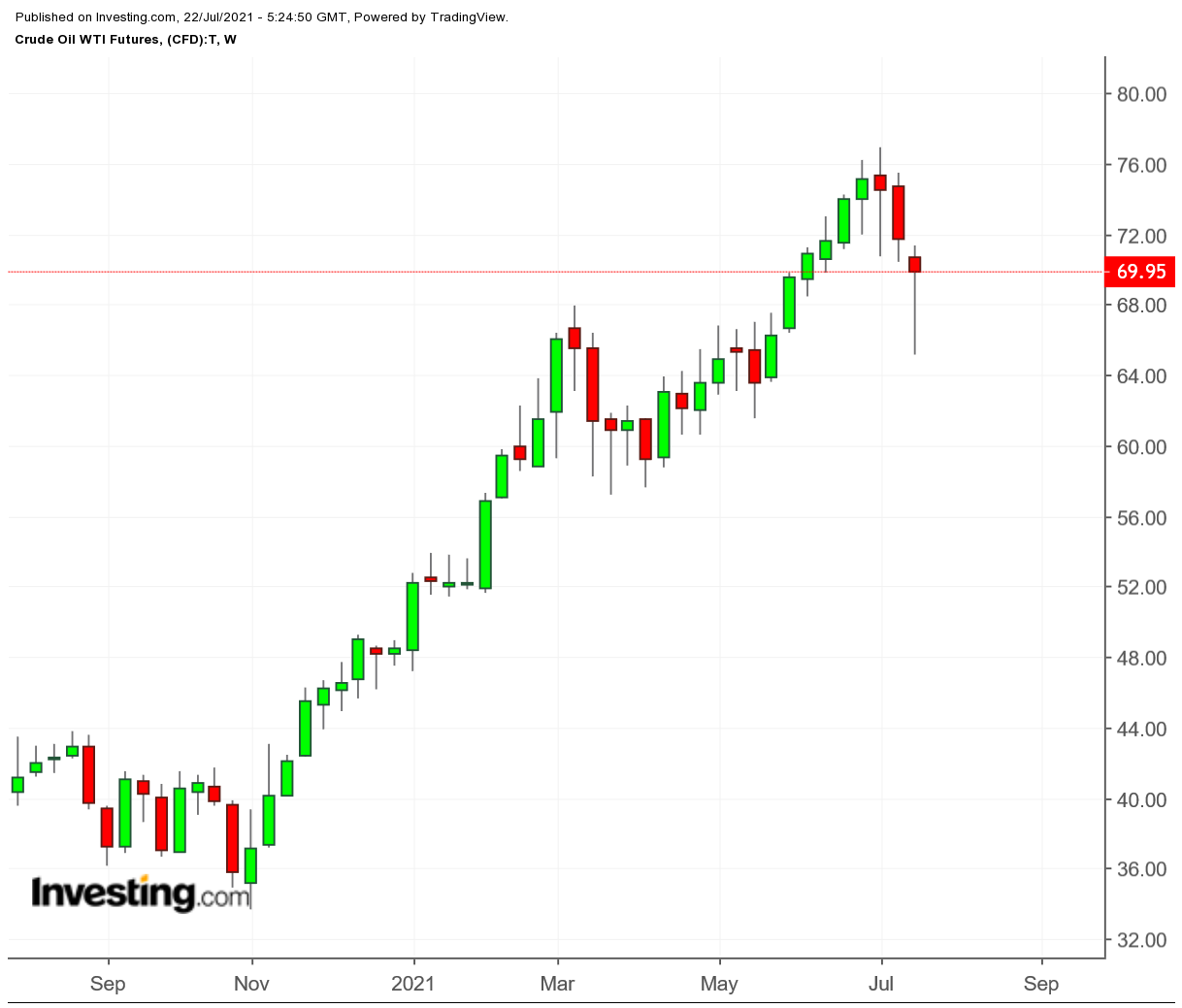The oil market has seen some extreme volatility this week. Some of it was due to OPEC's internal politics and the way the cartel chose to resolve the recent production impasse. Lack of clarity over demand signals has been an additional catalyst. Here's what it might all mean for prices.

On Sunday, OPEC+ met via videoconference and resolved remaining issues from its failed July 1 meeting.
Below, what the group agreed to do regarding oil production:
- Increase production by 400,000 bpd per month starting in August. This will mean an additional 2 million bpd of OPEC+ pumped by December, 2021 as compared to this month.
- The 400,000 bpd monthly increases will continue until 5.8 million bpd is returned to the market, which would bring us to September, 2022 if changes are not made at some later point. By then, OPEC+ would have reintroduced all of the 9.7 million bpd of oil production that it stopped in the spring of 2020.
- In addition, starting May, 2022, five member countries—UAE, Saudi Arabia, Russia, Kuwait and Iraq—will increase their output quotas via an agreement to raise their production baselines, (found here) which count for a cumulative 1.63 million bpd in increased production, if all of these countries produce the maximum allowed under their quotas.
These changes are being presented as accounting measures to ensure that each country in the group maintains the same percentage of cut from its capacity. It is not clear whether Russia will be able to hit the rate which it will be permitted under this agreement since it has never actually produced that much oil before. - Nigeria and Algeria have applied to the group for baseline increases as well, but it is not clear whether these will be approved in whole or in part.
- OPEC+ can decide to pause its plans for 3 months if there is an abrupt change to market conditions such as, for example, sanctions being lifted on Iran or some kind of economic disaster.
- The group will continue to meet monthly to assess progress and compliance, with its next meeting set for Sept. 1. For now, meetings are still virtual.
When trading opened on Monday the prices of WTI and Brent tumbled. Prices closed down by more than 7%. Both benchmarks fell below the $70 per barrel mark. The drop was not just due to OPEC+’s announcement, rather markets may also have been spooked by fear-inducing news about the impact of the Delta variant of the coronavirus and also by a selloff in the stock market.
However, after oil prices fell on Monday, prices went up a little on Tuesday and started climbing on Wednesday with Brent rising above $72 per barrel and WTI rising above $70 per barrel as of mid-afternoon.
Conflicting Market Signals Fuel Uncertainty
The rebound occurred despite the latest report from the U.S. Energy Information Administration (EIA) showing a build in crude oil inventories. Normally, a build in inventory would be seen as a negative sign for demand and a weight on prices. The EIA report was mixed, because it showed a slight drop in gasoline inventories.
This was not what the market expected because the report from the American Petroleum Institute (API) released the day before showed an increase in gasoline inventories.
Some analysts pointed out that even though gasoline inventories did not rise, the report showed an increase of 2.2 million barrels in inventories of the blending components used in gasoline. This could indicate that less gasoline is being produced, which means that refiners believe gasoline demand is going to decline soon. (And still prices rose after the report was released).
The truth is that there are signals to support the views of those who believe that oil demand is not going to improve much more and will level off or head down as we transition out of summer.
But there are also signals that indicate demand is still picking up and poised to climb, even if that climb is not as fast as some hoped only a few weeks ago.
This uncertainty, along with shifting OPEC policy, is making oil prices volatile, especially compared to last year when production cuts from OPEC+ helped keep prices notably stable (even if relatively low) throughout the summer months.
